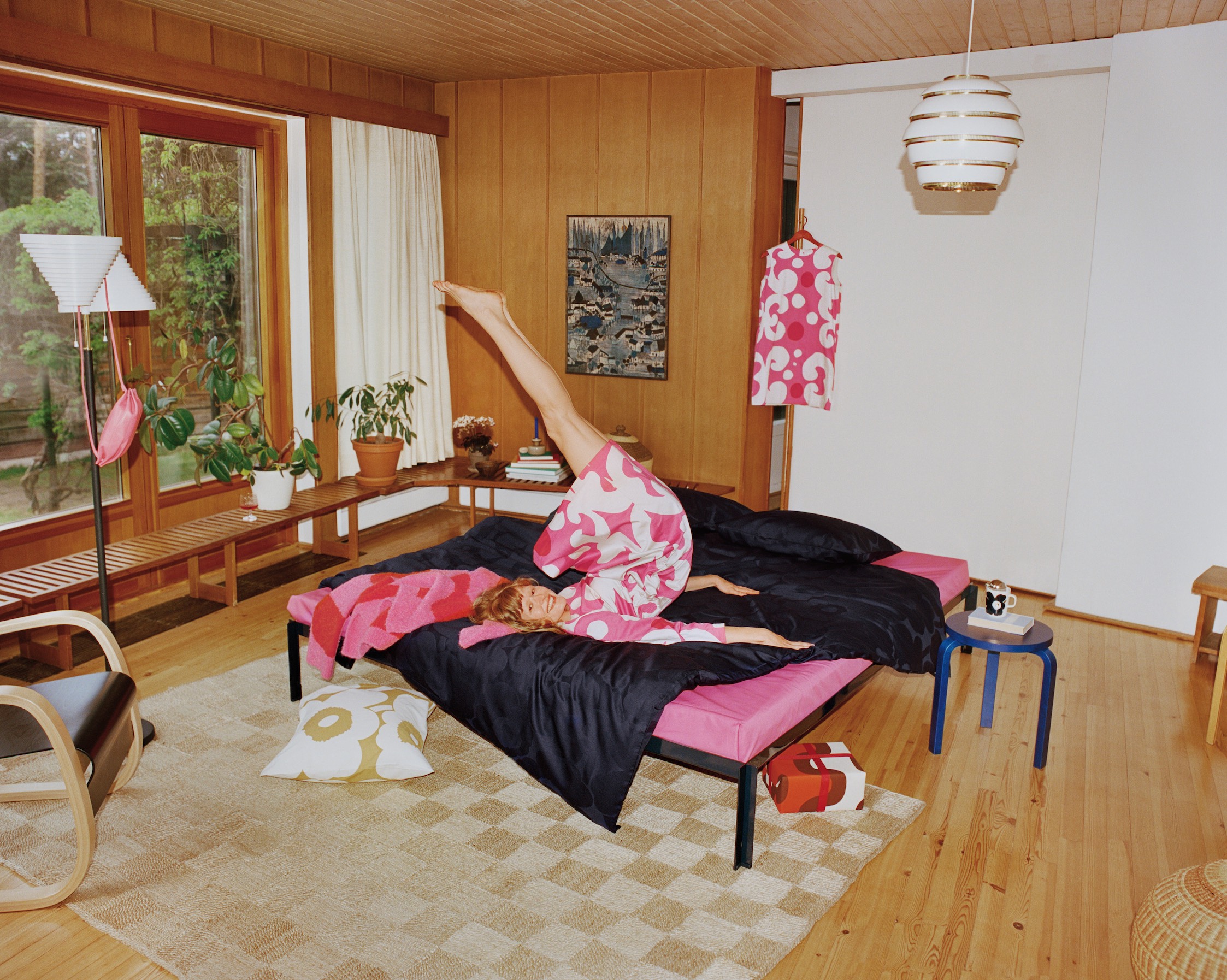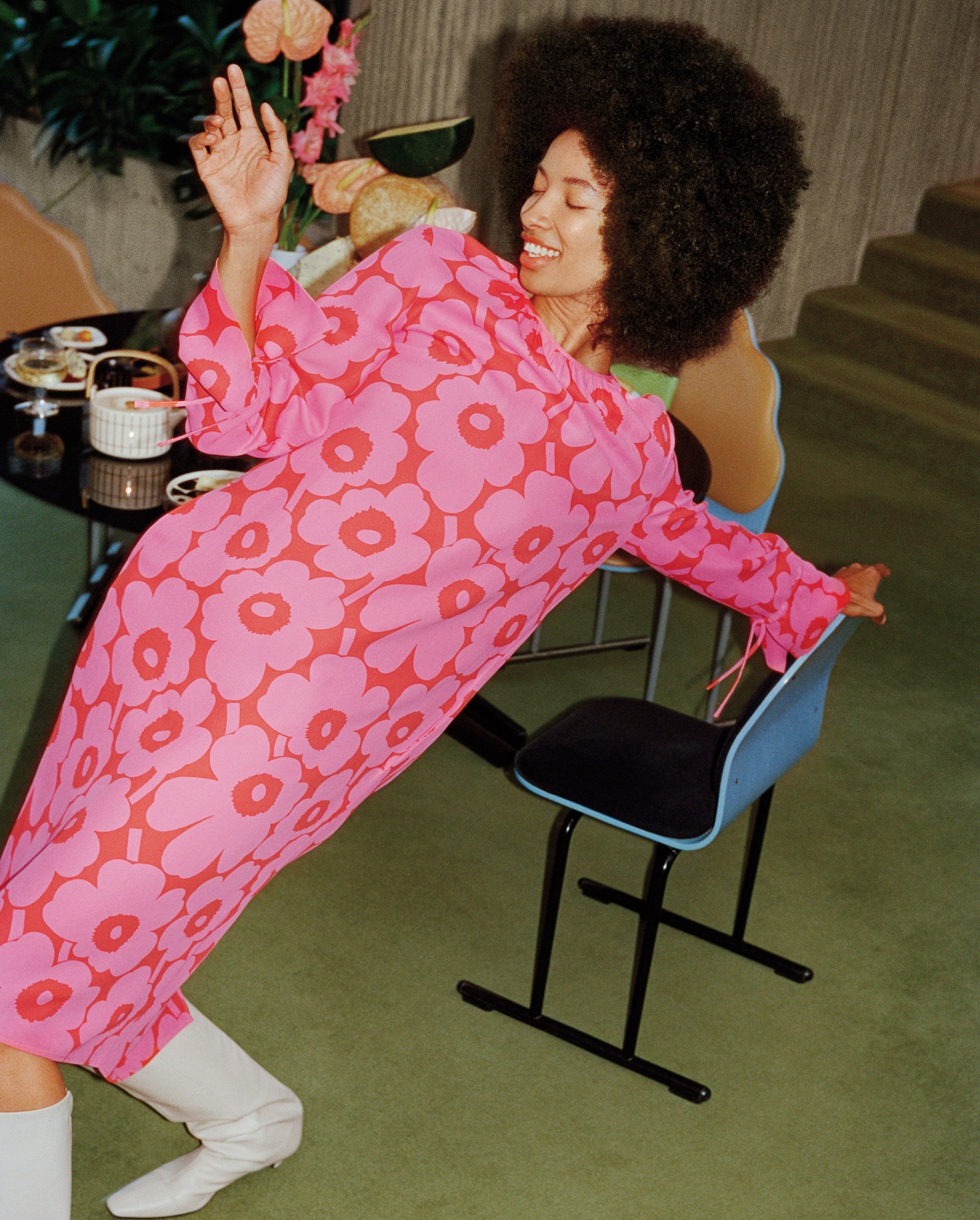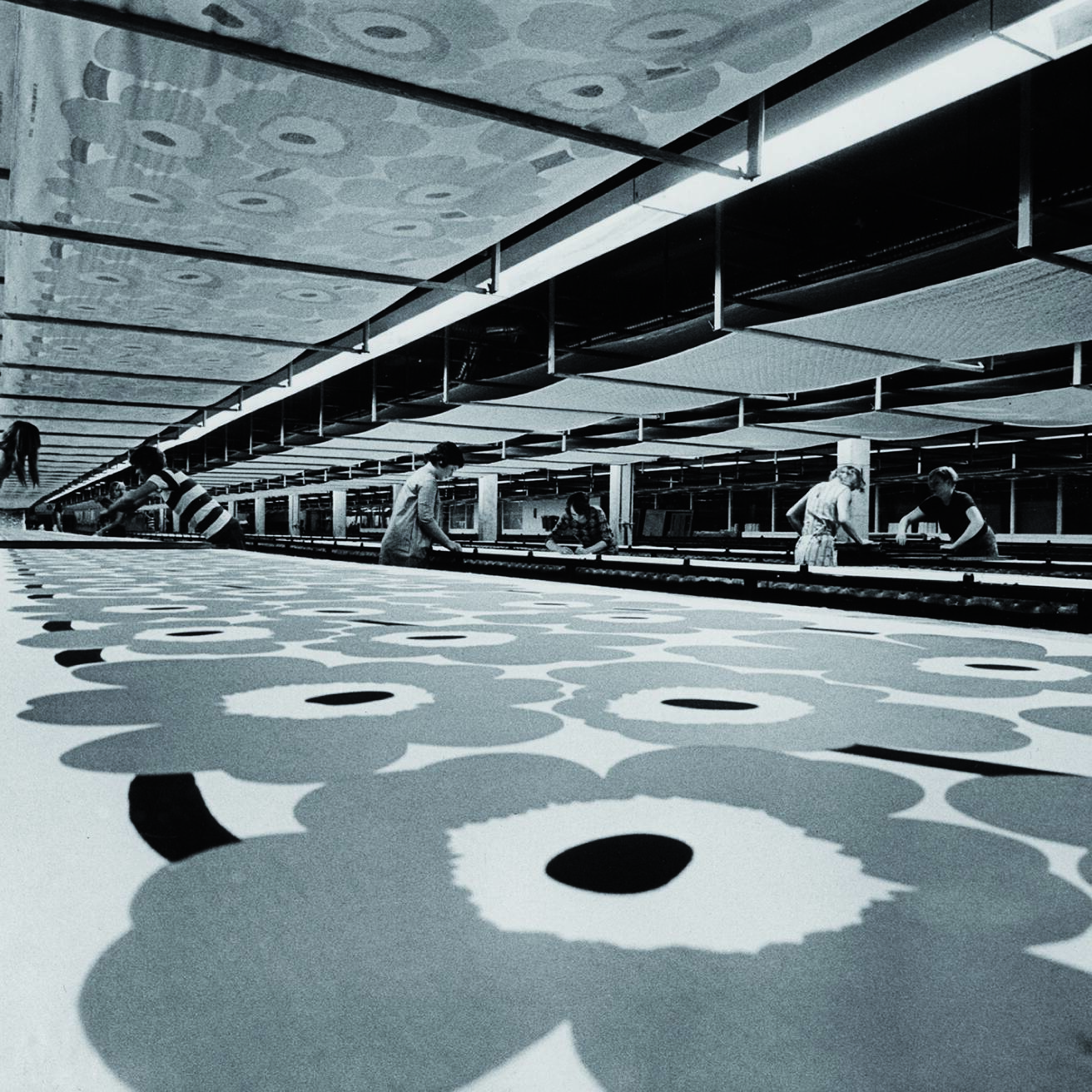This year sees the 60th birthday of Marimekko’s most famous image – the oversized floral print Unikko, designed by Maija Isola. And in this year’s spring/ summer collection, the Finnish textile pioneer pays tribute to its 1960s roots
 Photography courtesy of Marimekko
Photography courtesy of Marimekko
Words by Dominic Lutyens
In 1964, US photographer Tony Vaccaro travelled to Finland to snap Finnish brand Marimekko’s textiles for Life magazine. His arresting images include an aerial shot of a gigantic parasol emblazoned with the company’s floral print Unikko (Finnish for poppy). The photo’s setting is rural yet several models – or modern-day wood nymphs – sprawl under the rose-madder parasol in skimpy bikinis, looking thoroughly contemporary.
Marimekko launched its signature print – Unikko – the same year. Today, its coveted flower motifs ramble over Marimekko mugs, oven gloves, bath robes, duvet covers and its trademark roomy dresses, to name a fraction of the items they colonise. The Scandi-chic brand’s global presence is regularly boosted by collaborations with international brands, such as Samsung and Uniqlo.
This year is the 60th anniversary of Unikko and Marimekko is royally feting its kingpin print by including a plethora of new Unikko-patterned products in its spring/summer 2024 collection. These include a surprising iteration of the print – a limited- edition jar with a lid in the shape of a single Unikko bloom. Unikko’s flowers were conceived as abstractions of poppies. The jar’s lid is another abstraction, albeit a 3D one: it represents an individual bloom that seems to have escaped from the print and morphed into a standalone motif.
 Photography courtesy of Marimekko
Photography courtesy of Marimekko
Accounts of Unikko’s genesis have a mythological quality; it’s hard to separate fact from fiction. The peppy poppy print was the handiwork of forward-looking, free-spirited artist Maija Isola, who’s almost a byword for Marimekko. Employed by the formidable Armi Ratia, who co-founded the company in 1951, Isola would become Marimekko’s principal designer, producing more than 500 designs.
In the 1950s and early 1960s, she stamped her taste for radically simple prints on to Marimekko, and her boldly large-scale prints Kivet and Melooni, for example, paved the way for Unikko. Isola was influenced at the time by the New York art movement of colour-field painting. Sitting cross-legged on the floor, she hand-painted her designs while listening to music, an approach she called ‘dancing with a brush’. Underpinning Unikko’s raw vitality is Isola’s expressive brushwork.
Unikko is also known for its iconic 1960s colourway. This unites cool, magenta-toned red petals, an orange centre that creates a third colour – a warm, halo-like red where it overlaps the cold red – and midnight blue stems. The story goes that Unikko might never have existed had Isola not flouted Ratia’s zero tolerance for floral prints. Ratia insisted that these couldn’t recreate the beauty of real flowers. Itsy-bitsy florals were the norm in the textiles world then but Ratia deemed them old-fashioned, stereotypically equated with femininity and alien to Marimekko’s identity. Counterintuitively she championed large-scale patterns.
In fact, she fell for Unikko (part of an entire floral collection), seduced by its large-scale, graphic, modern rendition of flowers. It’s also possible that Ratia assented to Unikko because, by now, Isola had a high standing in the textiles world. Her designs were exhibited in the US and Canada in the 1950s to great acclaim. Flat and schematic, Unikko might appear childlike and naive but faux-naif is a more accurate description. It’s subtle and complex. The blooms vary in size and shape as if seen from different viewpoints. Yet the stems linking the blooms giving this repeat pattern structure and cohesion.
 Photography courtesy of Marimekko featuring the Marimekko printing machine
Photography courtesy of Marimekko featuring the Marimekko printing machine
Unikko is multi-layered on close examination. Arguably it chimes with the 1960s zeitgeist of pop art and hippie-era flower power. Uncannily Andy Warhol produced his Flower series in the same year. In 1972, newspaper The Boston Globe proclaimed: ‘Flower power is Armi’s line.’ In cash-strapped, depressed postwar Finland, there was a hunger for optimism and Marimekko’s prints, such as Unikko, provided a welcome tonic.
Unikko’s most emblematic colourway also hails from the 1960s, according to Minna Kemell-Kutvonen, design director for home and print design at Marimekko. ‘Unikko’s 60th birthday collection was directly inspired by some of its 1960s colourways,’ she says. ‘We continue to reintroduce the pattern on its original canvas – cotton fabric – but also challenge the print by bringing it into new, surprising contexts.’
Fittingly, Unikko’s 60th anniversary celebrations were inaugurated in the building in Helsinki where Ratia and Isola first met. The expanding family of Unikko-adorned wares were showcased at Milan Design Week and in Tokyo in the spring. Unikko’s joyous blooms will grace – or should that be garland? – other venues later in the year.
The story originally appeared in ICON 215, Spring/Summer 2024. Get a curated collection of design and architecture news in your inbox by signing up to our ICON Weekly newsletter

















